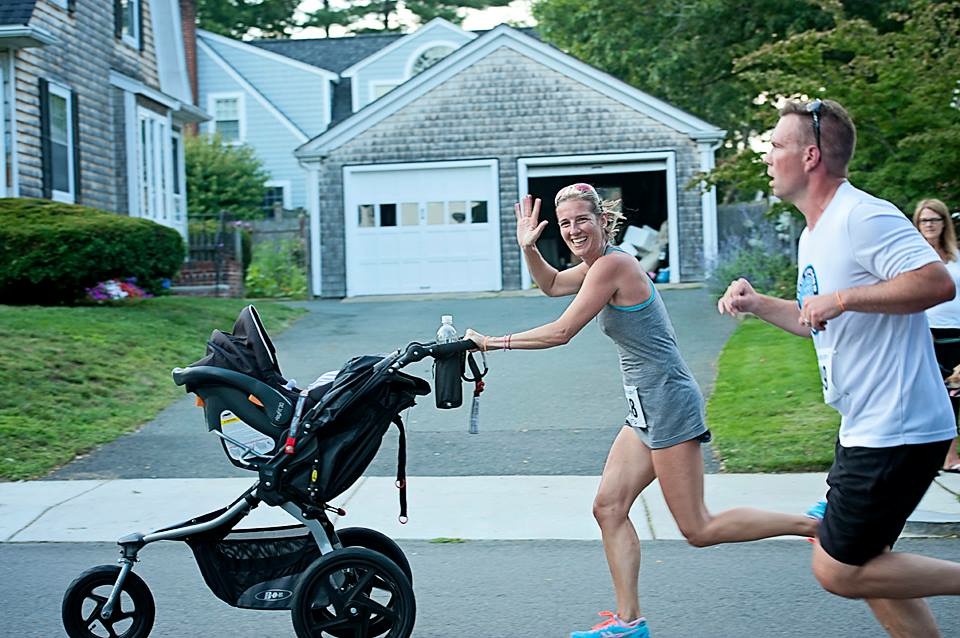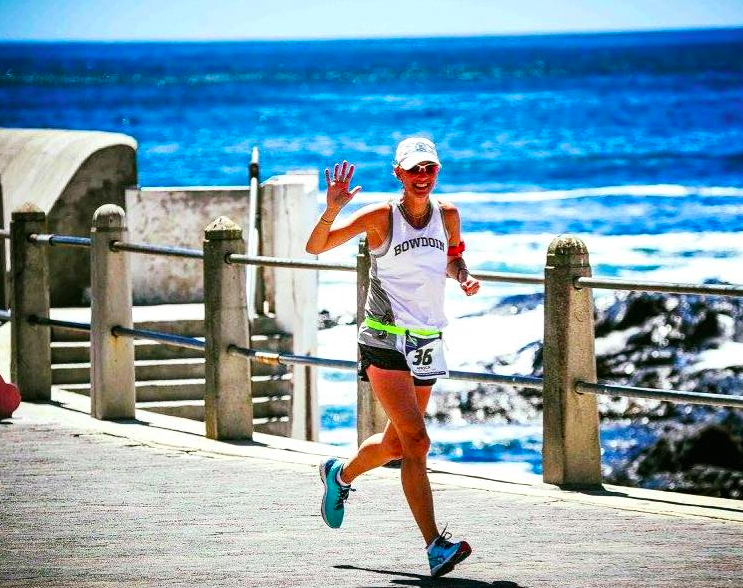Beat the Heat with these Tips for Running in Hot & Humid Weather
With an intense heatwave sweeping the Northeast and Europe, we thought what better time to share tips and advice to keep you running happy and healthy during the hot summer months.
Since the summertime is an active training period for runners signed up for fall marathons, it can be a really exciting time to be out on the trails and roads. But it can also be challenging (both physically and mentally) and sometimes unhealthy for runners. Below, we’re sharing our top tips for running in hot temperatures to make those miles a little more bearable. And we’d love to hear your tips and advice as well, especially from our FIT runners in Arizona and Florida who have more experience running in extreme heat than many of us in the Northeast.
1. Adjust Your Paces
This is one of the most important things to do when running in hot temperatures. Because your body feels increased physical stress in the heat — i.e., your heart rate and the effort your body perceives increases — it’s super important to run at slower paces in hot/humid weather. A good rule of thumb is to add 30-90 seconds per mile to your normal pace.
Here’s Scarlett, FIT Founder Kelly McLay’s daughter, on the track and keeping her paces in check. 😉
The good news is that slowing down due to heat and humidity will not cause you to lose fitness. In fact, it’s common for runners who train at slower paces during the hot summer to set fall PRs because your body is still working hard during your workouts.
TIP: Try listening to podcasts or audiobooks while you run since they can better match the intensity of your slower runs. Also, soothing music or music that plays at a low BPM can do the trick if you have a hard time slowing down.
2. Stay Hydrated
Hydrate! Hydrate! Hydrate! We can’t say it enough. While it can be tough to keep up with your hydration in the summer, it’s extremely important for runners.
The general recommendation is to drink 64 ounces per day, and this baseline increases with daily activity and how much you sweat in general. Try keeping a water bottle handy and sip throughout the day. It’s better to hydrate throughout the day versus chugging a ton of water before your run (if you have to do this, it’s probably too late).
The rule of thumb for hydrating during your run is to drink a minimum of 8 ounces of water every one to two hours. Invest in a hydration pack or belt or a water bottle with a hand strap is also convenient. You can also place water bottles along your route, or run where you know there are water fountains or stores so you can hydrate mid-run.
Tip: If you know you’ll be sweating a lot, weigh yourself before you head out. When you get back, weigh yourself again and note the difference. Use that to guide your post-run hydration. This can help you make sure you put all the fluids back in your body that you lost during your run.
3. Replenish Electrolytes
The FIT Team members are big fans of electrolyte drinks like Nuun tablets, Ultima packets, and SaltStick caps. And you can mix half a sports drink (Gatorade, Powerade, etc.) with half water, too. For something natural with no added sugar, beet juice is an option with impressive benefits to runners.
Remember that electrolytes can be taken before, during, and/or after workouts. And just like water intake, it’s super important to replenish your electrolytes.
4. Avoid Running During Peak Sun Hours
We know it can be challenging to run before the sun comes up or later in the evening after a long day at work, but it’s necessary during these hotter months if you want to run outside. Try finding a running buddy to help you get out the door early/late and keep you accountable.
5. Get a Chafe Stick!
Nothing can derail your summer running quite like bad chafing! Apply it before your run and during, if needed. We like Body Glide’s Anti-Chafe Balm. You can also find more options at stores like Target and CVS.
6. Wear Breathable Clothing & Sun-Blocking Gear
Photo of FIT Founder Kelly McLay running in Cape Town, South Africa during the World Marathon Challenge. Photo by Mark Conlon.
Lightweight, moisture-wicking clothing in light colors will be the most comfortable when running in extreme heat and humidity; avoid dark colors that absorb the heat from the sun. You might also want to opt for shorts or capris and short sleeves or tank tops.
Block the sun from hitting your face with hats, visors, and sunglasses (sunglasses also help prevent prolonged squinting, which is key on long runs). Don’t forget sunscreen! Water-resistant sunscreen is best and reapply if you’re sweating for more than an hour.
Tip: Don’t be afraid to shed layers. Sports bras and shirtless running are 100% acceptable. Show off your runner's body! If you run, you have a runner’s body.
Schedule cross-training, like hiking, on hot/humid days to avoid unhealthy running conditions.
7. Jump on the Treadmill or Cross-train
Dreadmill or a great tool to get your miles in? You decided — it’s all about mindset! When the weather isn’t ideal for running outside, a treadmill can be really helpful. Try alternating the incline and speed throughout your run to keep it interesting and challenging. Also, by adding a 1-2% incline you can better simulate running outside.
Cross-training is hugely important for runners. Take a class, swim, bike, hike, lift, etc. on hot days to support your running goals.
8. Post-Run Ice Bath
Post-run ice baths are an effective way to cool down quickly and safely. And, when possible, planning your route to end at the lake, pond, ocean, or pool for a refreshing post-run dip is one of our favorite ways to cool off after a hot run.







